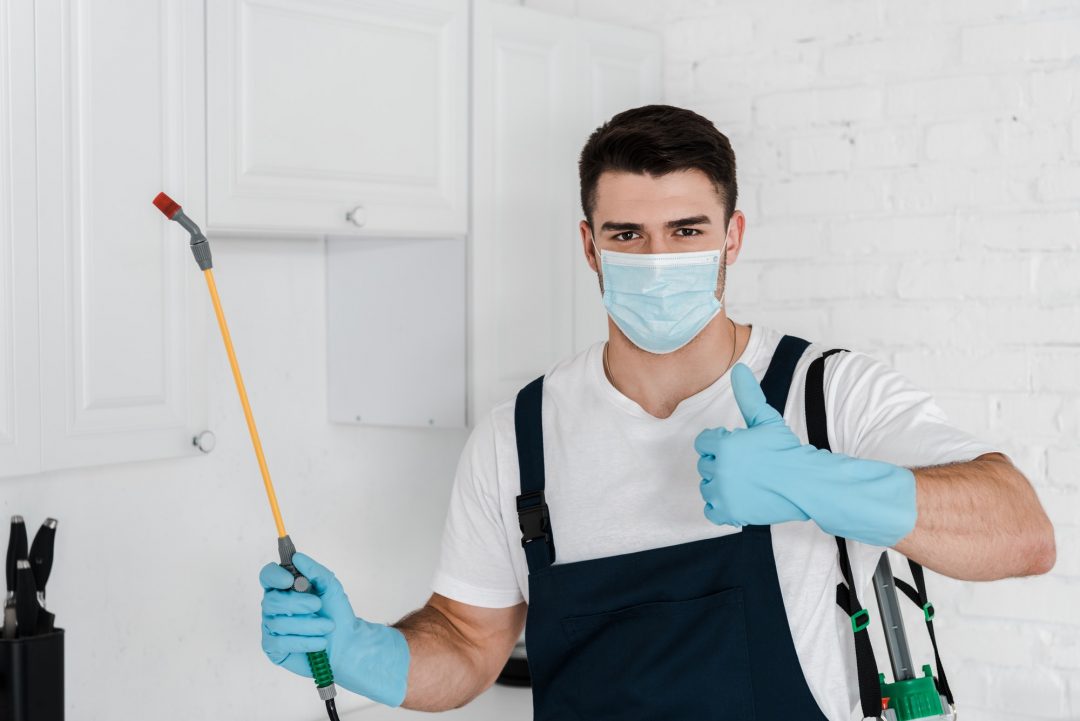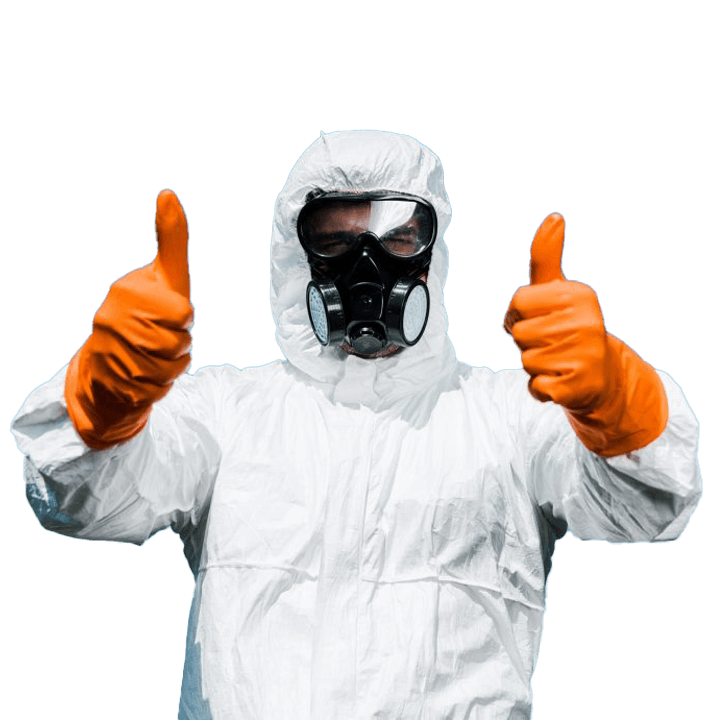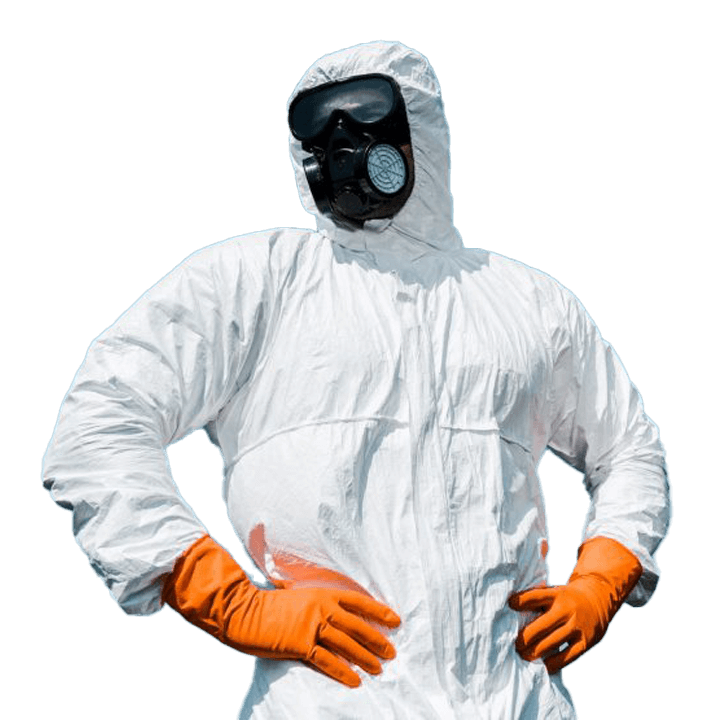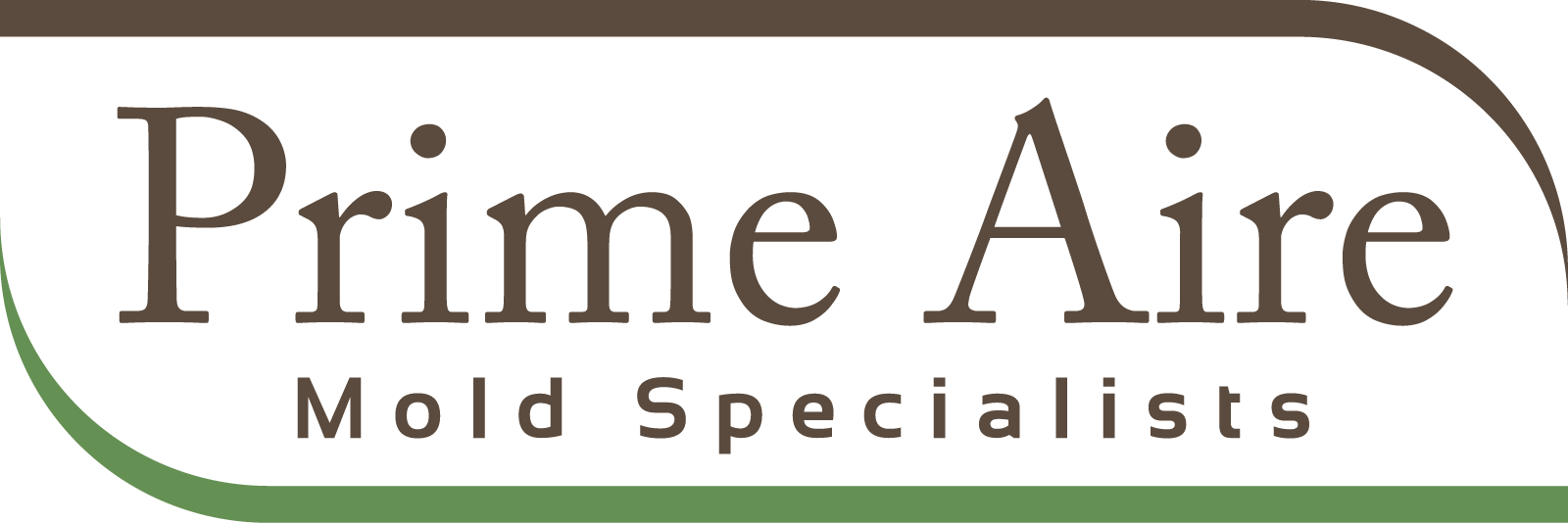- What Is Mold In NYC | PrimeAire Mold Services
What Is Mold?
For more specific information regarding your personal mold testing questions and concerns, call PrimeAire to speak to a LIVE certified technician
What Is Mold in NYC?
Molds are microscopic organisms (miniscule life forms) found virtually everywhere outdoors. No one really knows how many different species of mold exist but estimates range from tens of thousands to hundreds of thousands. Spore production is characteristic of molds in general to reproduce. A spore is a small reproductive body that is capable of growing into a new organism, producing bacteria, fungi, and algae. Most spores are filamentous (thread-like) organisms so small that 250,000 of them can fit on the head of a pin. They stay airborne indefinitely, drifting from one room to the next, landing on food, clothing, appliances, table tops, carpeting and furniture, walls and woodwork.
Any wet, damp or humid surface becomes a breeding ground for mold colonies and more spores. Harmless as well as dangerous molds can be found almost everywhere. They live year round in indoor and outdoor environments. They enter interior structures through doors, windows, vents, and cracks. And they can threaten your health.
Molds range in color – white, orange, green, brown, or black – and you cannot always see or smell mold or mold spores. Once mold is established inside a structure, it can reproduce rapidly and spread. If left unattended, it can cause tremendous damage. Large numbers of certain types of mold and fungus can weaken and destroy the structural integrity of the house or building, plus cause a variety of health problems. Not all mold spores are harmful, they break down into categories: Allergenic, Hyper-allergenic and Toxic.
Some molds produce powerful chemicals called “mycotoxins” that can produce illness in animals and people. Mold can cause havoc on your immune system and can lead to serious illnesses. Individuals seem to be quite different in their response to exposure to the toxic chemicals that some molds release. These differences between individuals contribute to the difficult question of determining safe exposure limits for mold. You can’t take a chance if you are responsible for others. When defining mold, it is important to distinguish between mold growth you can visibly see on a surface, and mold spores that cannot be seen with the naked eye but are ever-present in the air. The mold you can see growing on the surface of construction materials can cause property damage. The mold spores you cannot see floating in the air can cause people harm.
To reproduce, mold and fungus release mold spores into the air. When toxic mold spores float in the air, they pose inhalation risks to everyone who inhales them. They are considered a major allergen, ranking with pollen as the main source of air contamination for allergy sufferers.
Mold spores are regenerative cells surrounded by a very tough coating that can survive detergents, chemicals, bleach and extreme temperatures. Invisible to the natural eye, mold spores typically require between 400 and 600X magnification to identify. It is has been said that 250,000 mold spores can fit on the head of a pin. A visible patch of mold the size of a quarter can represent literally billions of mold spores.
Molds reproduce by releasing spores. Airborne mold spores are literally everywhere – all the time, continually floating in and out of the buildings we all live and work in. Generally speaking, every day levels of mold spores floating in and out of buildings is not a problem unless there is dampness somewhere in the building. When airborne mold spores come in contact with wet or damp construction materials, such as wood, drywall, cabinets or carpet, they colonize (settle). When mold spores colonize on a surface they can grow and spread rapidly, significantly multiplying indoor spore levels, giving off a variety of odors, and exhibiting hundreds of different colors and textures.
People react differently in their sensitivity to airborne mold spores. The elderly, children and those with respiratory problems and compromised immune systems, are the most vulnerable to ill health effects of mold. However, even healthy individuals may have adverse reactions to high concentrations of mold in their environment.
Call PrimeAire Mold Services to speak to a Live Certified Mold Professional today.
Mold often grows behind walls and inside ceiling and floor cavities long before it is ever detected. By the time you start smelling an unpleasant odor, rest assured mold has been growing somewhere for some time and every day is growing more. If you suspect you have mold growing indoors, the time to act is sooner rather than later.

Testimonial
Here’s what our customers say
Giving the fresh air back to the household



PrimeAire Mold Services
What Is Mold?
Mold reactions may include the following:
• Nasal and sinus congestion
• Fatigue
• Nose bleeds
• Blurred vision
• Asthma • Sore throat
• Irritated eyes
• Skin rash
• Cough
• Shortness of breath
Tremors Unfortunately, homes and buildings provide an ideal breeding environment to support colonized mold growth. To reproduce, colonize, and grow, mold spores require:
• Dampness
• A dark place
• An organic porous material as a food source
• The right high temperature
Sources of indoor moisture:
• Flooding
• Leaking roof
• Damp basement or crawl space
• Constant plumbing leaks
• Steam from cooking
• House plants
• Shower/bath steam and leaks
• Wet clothes on indoor surfaces
• Humidifiers
• Clothes dryers vented indoors
• Backup sewers
• Mud and ice dams
• Combustion appliances, such as stoves not exhausted to the outdoors
Along with moisture sources, conditions that help trigger mold growth include:
• Humidity in the range of 50% or greater
• Uncirculated air
• Airtight construction
• Improper ventilation
• Areas already infested by mold
• Low nitrogen levels in the air or ground
How Does Mold Grow In My Home or Workplace?
Once mold spores settle in your home, they need moisture to begin growing and digesting whatever they are growing on. As long as there is no dampness, excessive humidity or water intrusion sources, indoor mold growth should not occur. There are molds that can grow on wood, ceiling tiles, wallpaper, paints, leather goods, clothing, furniture, carpet, drywall and insulation. When materials get wet or damp because of high indoor humidity, which is often caused by indoor humidifiers or excessive moisture in locations such as concrete slab, roof leaks, plumbing leaks and flood areas, conditions are often ideal for indoor mold growth. Indoor mold growth can also occur from sprinklers contacting exterior walls over time, or from still water next to or under a structure. Realistically, it is almost impossible to rid all airborne mold spores from an indoor environment; however, you can prevent mold from growing indoors by controlling moisture.
How Can I Be Exposed to Mold?
Illness from mold exposure can only occur in one of three ways:
- Through absorption into skin
- Ingestion or
- Inhalation.
While it is never good to have mold growing indoors, if it is, you are not necessarily exposed to a health risk just because it’s there. Nobody gets sick looking at mold on a wall. But when molds are disturbed, their spores may be released into the air. You may then be exposed to the spores through the air you breathe. Furthermore, if you directly handle moldy materials, you can be exposed to mold and mold spores through contact with your skin. Eating moldy foods or having hand-to-mouth contact after handling moldy food is yet another way you can be exposed. With the exception of children who don’t know any better, most people would not intentionally touch mold or knowingly ingest it. But disturbing mold can easily send billions of spores in the air and create an immediate health risk within an enclosed indoor environment.
How is Mold Disturbed?
An action as simple as cleaning mold that is growing on a surface will send spores airborne. Other ways include:
• scraping or scrubbing mold off of moldy surfaces
• demolition or tear out of mold contaminated construction materials
• vacuuming moldy carpet (conventional vacuum cleaner bags blow mold spores through the bag into the air)
• running a furnace or air conditioner with mold in the duct work
• running fans in rooms having mold with contaminated materials
• opening doors and windows when a house smells like mold (a strong breeze blowing through can stir up settled mold spores into the air)
How Do I Know if I Have a Mold Problem?
You may have seen white thread-like growths or fuzzy blue-green clusters or small black specks on surfaces in your house, or smelled a “musty” odor. Obviously, if you see mold or smell mold indoors, you have a mold problem. However, you can’t always rely upon your senses to tell if you have a mold problem. Hidden mold can be growing inside wall, floor, or ceiling cavities long before being detected.
Remember that all indoor mold growth is caused by some form of water intrusion. Have you ever had a flood, a toilet or bath tub overflow, a roof leak, a slab leak, a plumbing leak, a hot water tank leak, or even a freak accident like a fish tank break open? Does water pool under or next to your house? Has water from sprinklers ever been spraying on your building for a long time? All of these things cause indoor mold problems. If you answered YES to any of these questions, it is possible that you have a mold problem.
Common places to find mold are in areas where water has damaged building materials and furnishings. Mold can also be found growing along walls where warm moist air condenses on cooler wall surfaces such as inside cold exterior walls, behind dressers and headboards, and in closets where articles are stored against walls. Rooms with both high water usage and humidity such as kitchens, bathrooms, laundry rooms and basements are often havens for mold. If you notice mold or know of water damaged areas in your home, it is time to take action to control its growth. It’s time for a certified professional mold inspection.
How Can I Control Mold Growth In My Home?
Fix any moisture problems in your home:
• Stop all water leaks first. Repair leaking roofs and plumbing fixtures. Move water away from concrete slabs and remove water from crawl spaces. Redirect sprinklers that spray on exterior walls. If you’re not sure about current or previous water intrusion sources, have a mold inspection and moisture assessment done by a Certified Mold Inspector.
• Increase air circulation within your home, especially along the inside of exterior walls, and ventilate with fresh air from outside. Provide warm air to all areas of the home. Move large objects just a few inches away from the inside of exterior walls to provide good air circulation.
• Install and use exhaust fans in bathrooms, kitchens and laundry rooms.
• Ventilate and insulate attic and crawl spaces. Cover earth floors in crawl spaces with heavy plastic.
• Clean and dry water damaged walls, cabinets, carpets, clothing, bedding and upholstered furniture within 24 to 48 hours, or consider removing and replacing damaged furnishings.
• Invest in high quality HEPA vacuum cleaner bags. Vacuum and clean your home regularly.
Small Home
Lacus erat diam ornare-
Nullam hac eleifend
-
Nunc augue donec
-
Elit duis et
-
Quisque odio per
-
Condimentum lorem mus
Small Business
Lacus erat diam ornare-
Nullam hac eleifend
-
Nunc augue donec
-
Elit duis et
-
Quisque odio per
-
Condimentum lorem mus
Enterprise
Lacus erat diam ornare-
Nullam hac eleifend
-
Nunc augue donec
-
Elit duis et
-
Quisque odio per
-
Condimentum lorem mus
Why Choose Us
Mold Inspection Testing & Equipment
- Air and moisture tests
- Swab sample
- Surface sampling
- Dust sampling
- Tape lift sampling
- Inner wall checks
- Laser particle counters
- Hyrometers
- Optic borescopes
- Leak detection
- Thermal imaging(infrared)
We work with the most skilled, equipped and accredited labs. Analytical accuracy and fast turnaround is our top priority. All mold & toxic mold tests and samples are sent to an accredited laboratory to perform an analysis and most results are available to the client within 48–72 hours.
Primary Objectives of Mold Sampling
- Confirm or rule out the probability that mold is originating from a suspect condition indoors
- Assess the potential for property damage caused by mold without invasive procedures
- Assess the potential negative impact of mold on indoor air quality
Goals of Our Mold Investigation
- Determine if there is a mold or toxic mold infestation problem
- Determine the cause of the mold or toxic mold infestation problem
- Determine the extent of the mold or toxic mold infestation problem
Types of Mold Testing Include
- Air Testing using Air Cassettes
- Wall Check Cassettes
- Carpet Check Cassettes
- Bulk, Swab & Wipe Samples
- Tape Lift Samples
- Clearance Testing
Mold Testing Involves Collecting Samples
- Identify the type of mold present
- Quantify the level of mold present
3 Most Common Types of Samples Used in a Mold Inspection
- Surface samples (testing mold growth on surfaces)
- Air samples (testing airborne mold spores)
- Dust samples (mold DNA analysis)
Mold Testing in NYC | PrimeAire Mold Services
We use safe and environmentally friendly measures.
Our Mold Inspection Reports are our pride, digital, organized, easy to read and very well documented providing pertinent Mold Removal guidelines.
The following are some of the potential property conditions which warrant a professional mold inspection:

Frequent Condensation on Window
Consequences: Moisture seeps past window frame and into wall cavity causing water damage and mold growth inside wall.
Surface Mold On Window Sill
Consequences: Moisture seeps past window frame and into wall cavity causing water damage and mold growth inside wall.
Surface Mold Inside Window
Consequences: Moisture seeps past window frame and into wall cavity causing water damage and mold growth inside wall.
Bathtub/Shower Mold
Consequences: Mold comes back with a few days after cleaning, severe water damage, degradation of construction materials, and mold growth inside wall cavities.
Mold, Dry Rot, Water Damage on Eaves
Consequences: Severe water damage, degradation of construction materials, and water damage and mold growth spreading under shingles, onto sub-roof materials.
Roof Leak
Consequences: Water damage and mold growth spreading under shingles, eventual on attic and interior construction materials.
Over-Exposure to Water on Stucco
Consequences: Water damage and mold growth on stucco and inner-wall materials and interior walls of the structure.
Common Questions
Frequently Asked Questions
For detailed information or to request a quote, Call PrimeAire Mold Services at 1-877-307-5166 to speak to a Live Certified Mold Professional today.
Mold is a simple organism found everywhere, indoors and outdoors. Mold spores are microscopic (tiny and lightweight) and travel through the air we breathe. Airborne mold spores in large numbers are a known allergen that can cause allergic reactions, asthma episodes, infections, and other respiratory problems for people, especially children and elderly individuals.
Molds can be a major source of building sickness but not the only potential cause. Other issues can cause building sickness.
People living in or working in dwellings with building sickness have symptoms similar to a mild case of influenza (the flu) with the signs and symptoms disappearing within a few hours of leaving the building. Headaches, fatigue, and respiratory problems can also be experienced by people exposed to sick buildings.
Mold will grow in an environment that is warm, moist and unventilated. Once airborne, mold spores can be spread throughout your structure via the air duct system.
Mold can grow within areas of the house / building that you do not see. Wherever there is exposure to water and a mold "food source" such as cellulose (a component of wallboard), mold can grow. Areas such as the interiors of walls, showers and bathrooms, crawl spaces, attics, drywall tape, cracked plasterboard and dampened carpets are a few discovery areas for mold exposure.
New building methods make buildings better insulated and thus more likely to retain molds within the structure. Buildings are more airtight and any unventilated moisture that gets inside stays trapped inside, allowing mold to grow and spread rapidly.
Molds will grow any time the environment is favorable. Molds can be introduced into the house / structure when the building is under construction or after completion through events such as water damage from leaky pipes, roof leaks, sink, tub, or toilet overflows, cracks in the sealant around tubs /showers and use of inadequate materials during construction. There are documented cases demonstrating the damage caused by contractors allowing building materials to become wet during construction.
See examples of recent mold damage coverage: Forbes magazine: "The Fungus That Ate Sacramento;" CBS News: "Black Mold - Creeping Destruction;" CBS News/ 48 Hours: "Brockovich Takes on a New Foe: Mold;" CBS News/48 Hours: "An Insidious Mold."
In the past, insurance companies have covered mold repairs, but this is changing. Due to litigation and expensive repairs that can be incurred, insurance companies are now starting to consider mold issues a "maintenance issue" even if it costs thousands of dollars to repair/replace walls, etc. Please consult your insurance policy to see if you are covered.
It is possible to clean up visible (surface) mold with a solution of water and bleach, but precautions should be taken. For specific instructions, please refer to FEMA. Mold that is not visible however may require professional remediation.
By eliminating all of the mold that you can see, you may help your situation. However, this may not be the final solution since contamination may be originating from sources such as carpets, the inside of walls, air ducts, crawl spaces and sources outside of your home or building.
